Improve Your Posture
19 Jan 2021
19 Jan 2021

Feeling uncomfortable or limited when performing specific movements is often an indication that your body is under stress. This stress occurs when your body is unable to complete the range of motion that it was designed to perform. Doing mobility and flexibility exercises is an excellent way to combat the effects of our modern work style.
We are often placed in limited motion scenarios. Add poor posture and long periods staying in the same position, and you could risk causing or even worsening musculoskeletal disorders. Often manual or labour-intensive roles, such as jobs in construction and heavy manufacturing, are likely to cause such problems. However, we’ve seen an increase in clients with repetitive strain and overuse injuries who have office jobs and/or work from home.
Desk + Exercise = Deskercise (Stretches you can do daily at work)
Building healthy habits around how we work at our desk will help offset the following issues:
A comfortable work environment is essential. To ensure your workspace is set up correctly, ask your employer to organise an ergonomic assessment with Habit Health.
Working out at the gym can help immensely with your overall wellbeing. Additionally, building healthy habits into your daily work routine accentuates the benefits of working out at the gym and is simple to implement. This guide introduces highly effective stretches to relieve tension, move comfortably, and help you feel relaxed.
The chest muscles are one of the most important areas to stretch for your body, as working at desks can have us hunched forward for lengthy periods.
How To: In a seated or standing position, place your arms behind your back and try to lace your fingers together. Straighten the arms and gently lift your hands a few inches until you feel a stretch in your chest. Hold for 10 to 30 seconds. Avoid this move if you have shoulder problems. Another method is to put your forearms on either side of a doorway, gently pressing forward until you feel a stretch in the chest.
Using your phone, tablet or working on a computer could add up to a lot of screen time. Tension tends to build up in the neck and can lead to headaches, upper back tension and extra stress on the neck muscles. An average head weighs up to 5-7 kg, so you can imagine how much strain that puts on your neck.
How To: Sitting in your chair, reach down and grab the side of the chair with the left hand and gently pull while tilting your head to the right, feeling a stretch down the left side of the neck and shoulder. Hold for 10 to 30 seconds and repeat on the other side.
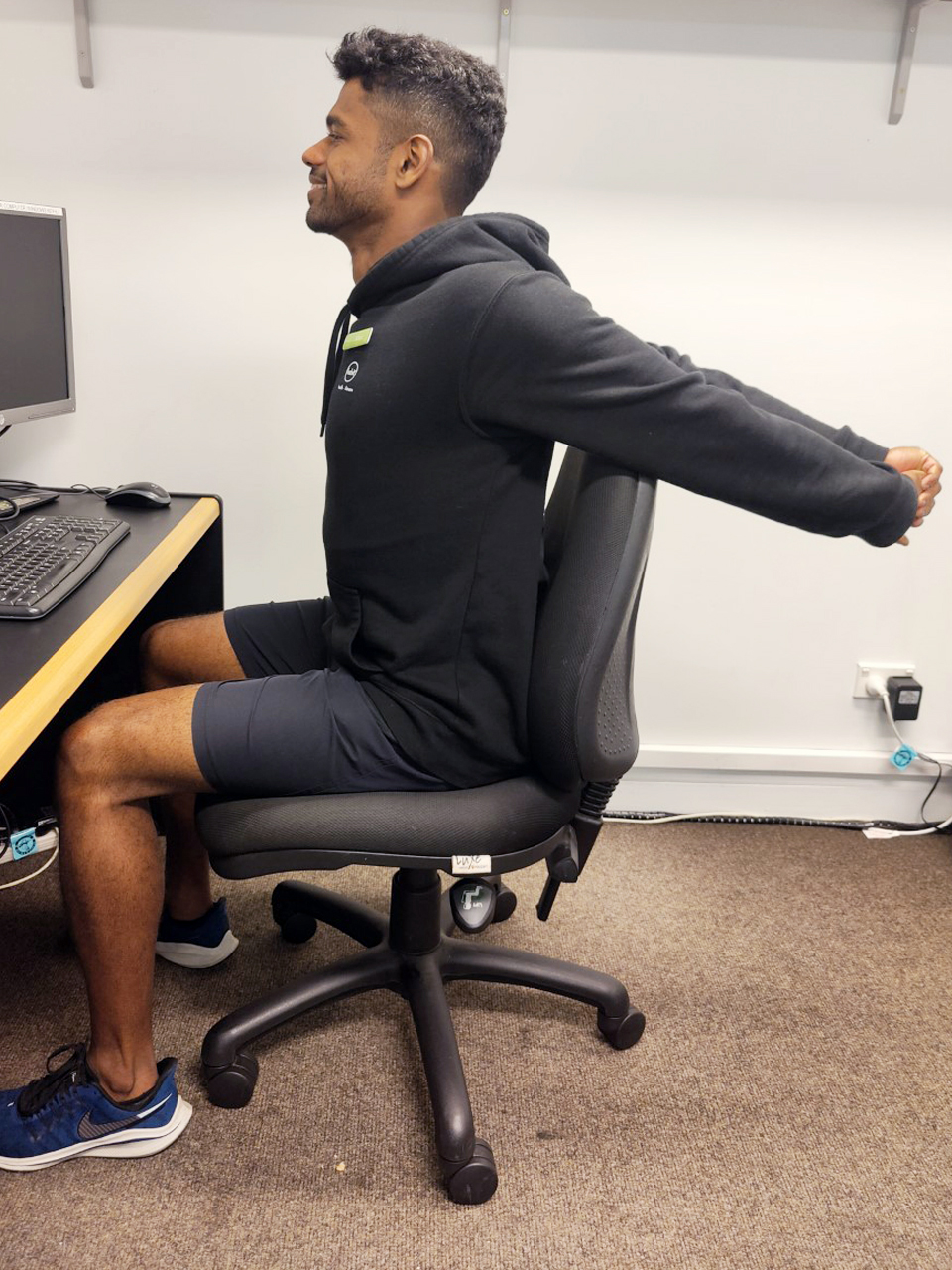 | 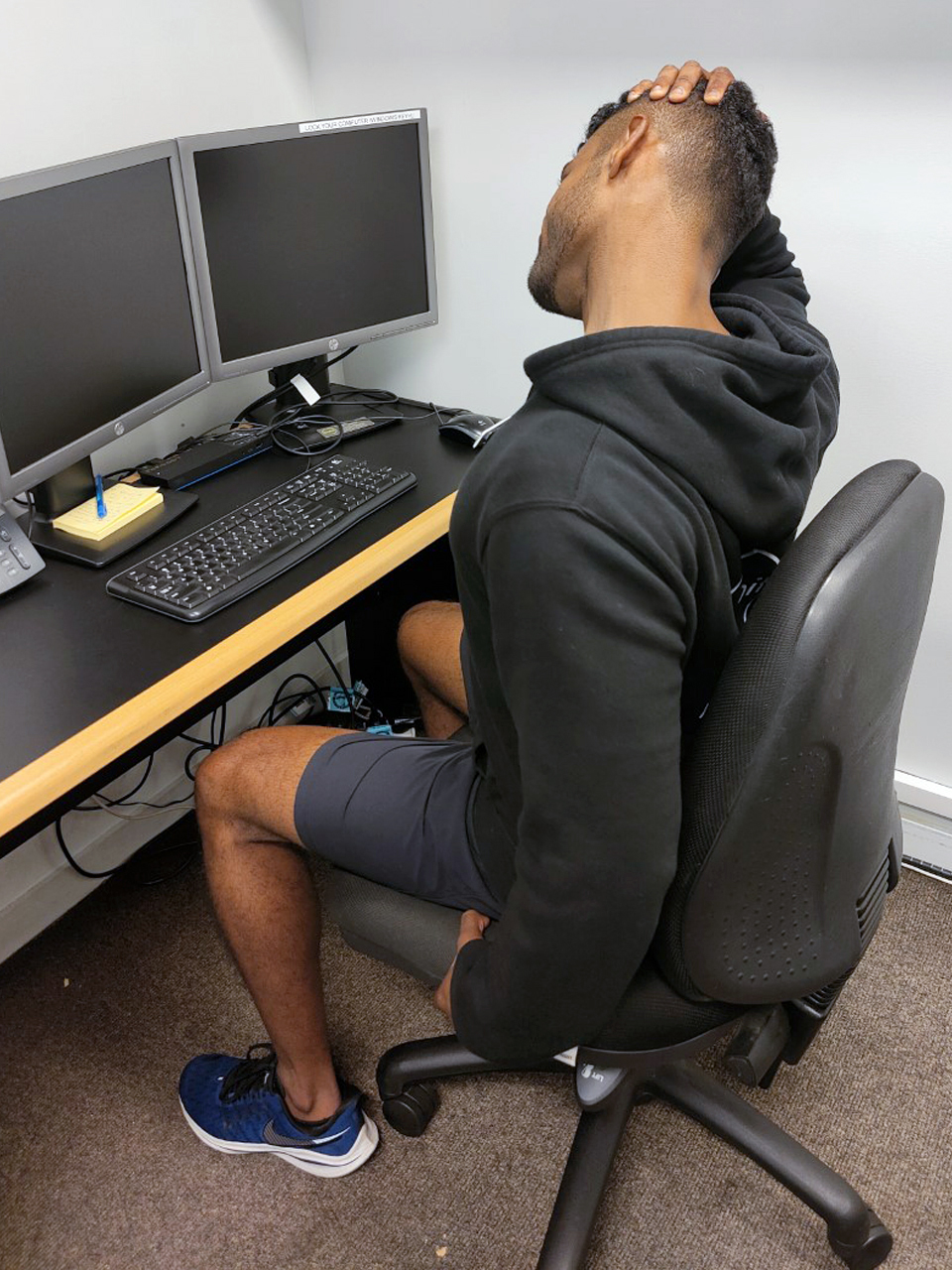 | 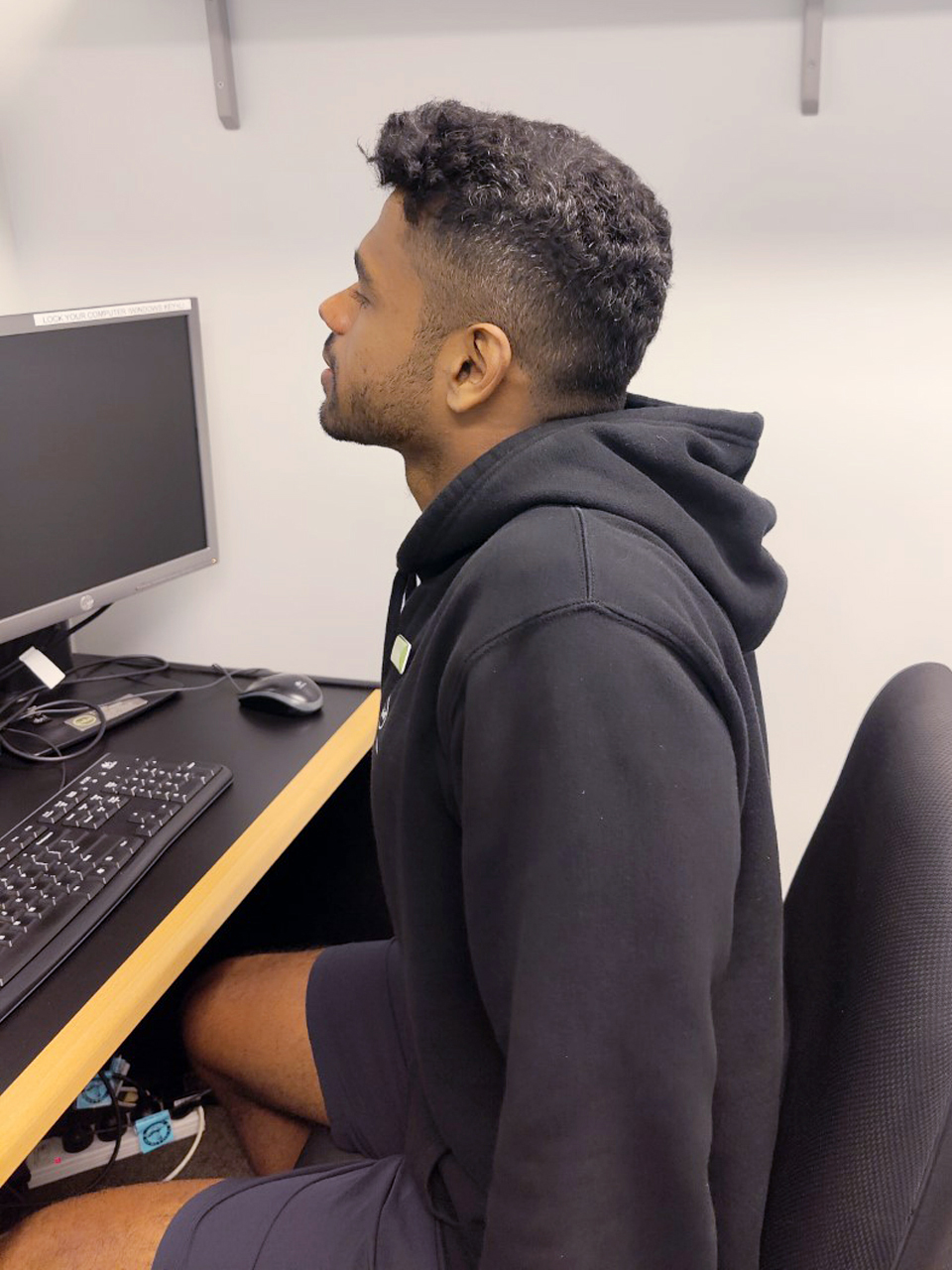 |
Typing can develop tension. We tend to hunch forward a lot more than we realise, making the trapezius and other shoulder muscles tight with tension. We need to ensure that we reengage these muscles and get the blood flowing through them. A simple but effective movement for the shoulders is shrugging.
How To: Seated or standing, lift the shoulders towards the ears, squeezing them as hard as you can. Hold for 1-2 seconds and roll them back as you relax down. Repeat for 8-10 reps and then roll the shoulders forward.
Hamstring muscles are the big muscles just below the buttocks and are in a shortened position when we sit. i.e. The muscles that feel tight when we bend over to grab that pen off the floor and so we have to bend our knees. Tight hamstrings can cause leg stiffness and even lead to lower back pain.
How To: While seated, rest your heel on the floor with your knee straight. Gently lean forward until a stretch is felt behind your knee/thigh. You should keep your lower back straight to focus the stretch on the hamstring muscles. Hold the stretch for 20-30 seconds, then repeat 3-4 times on each leg.
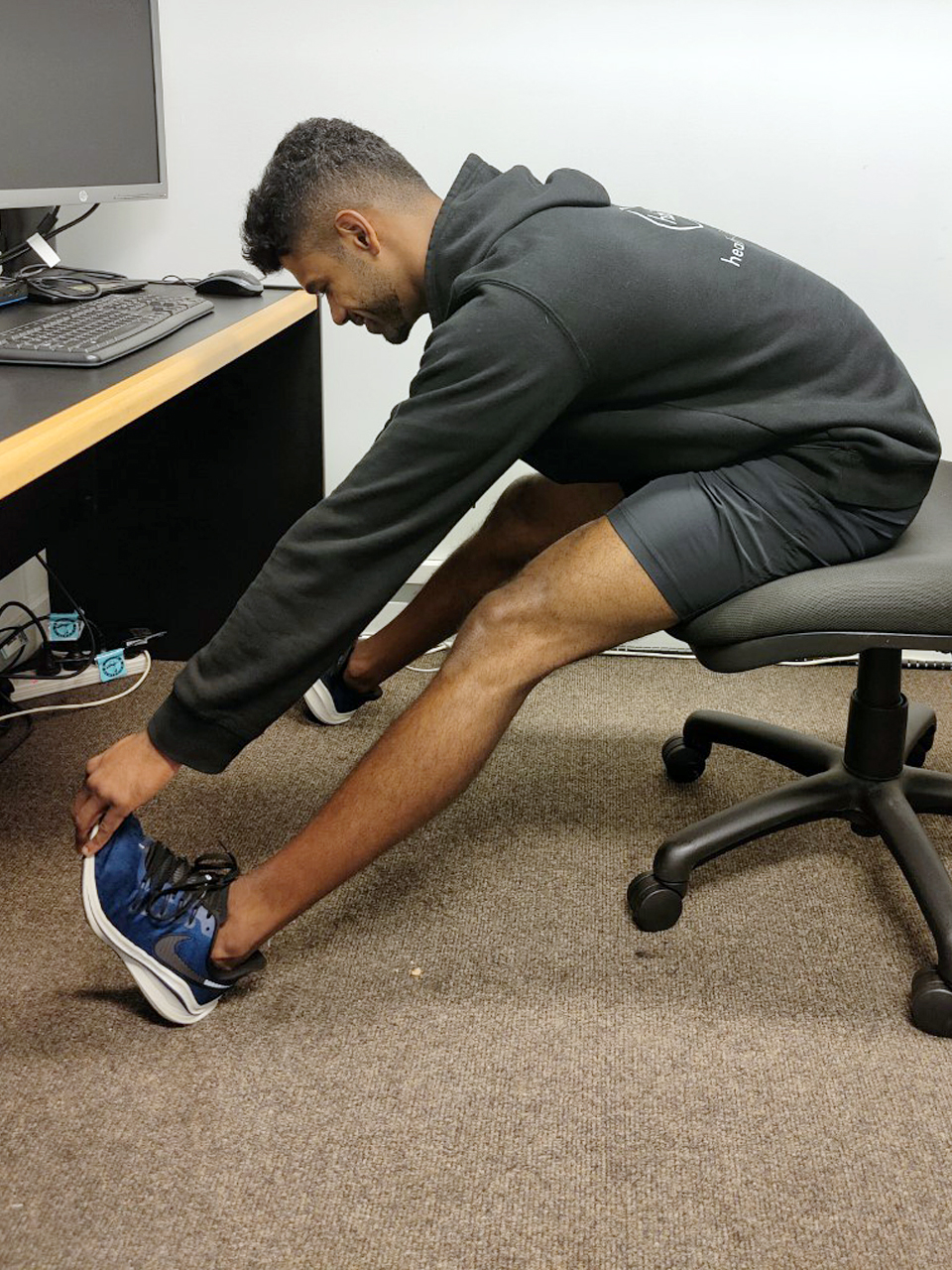 | 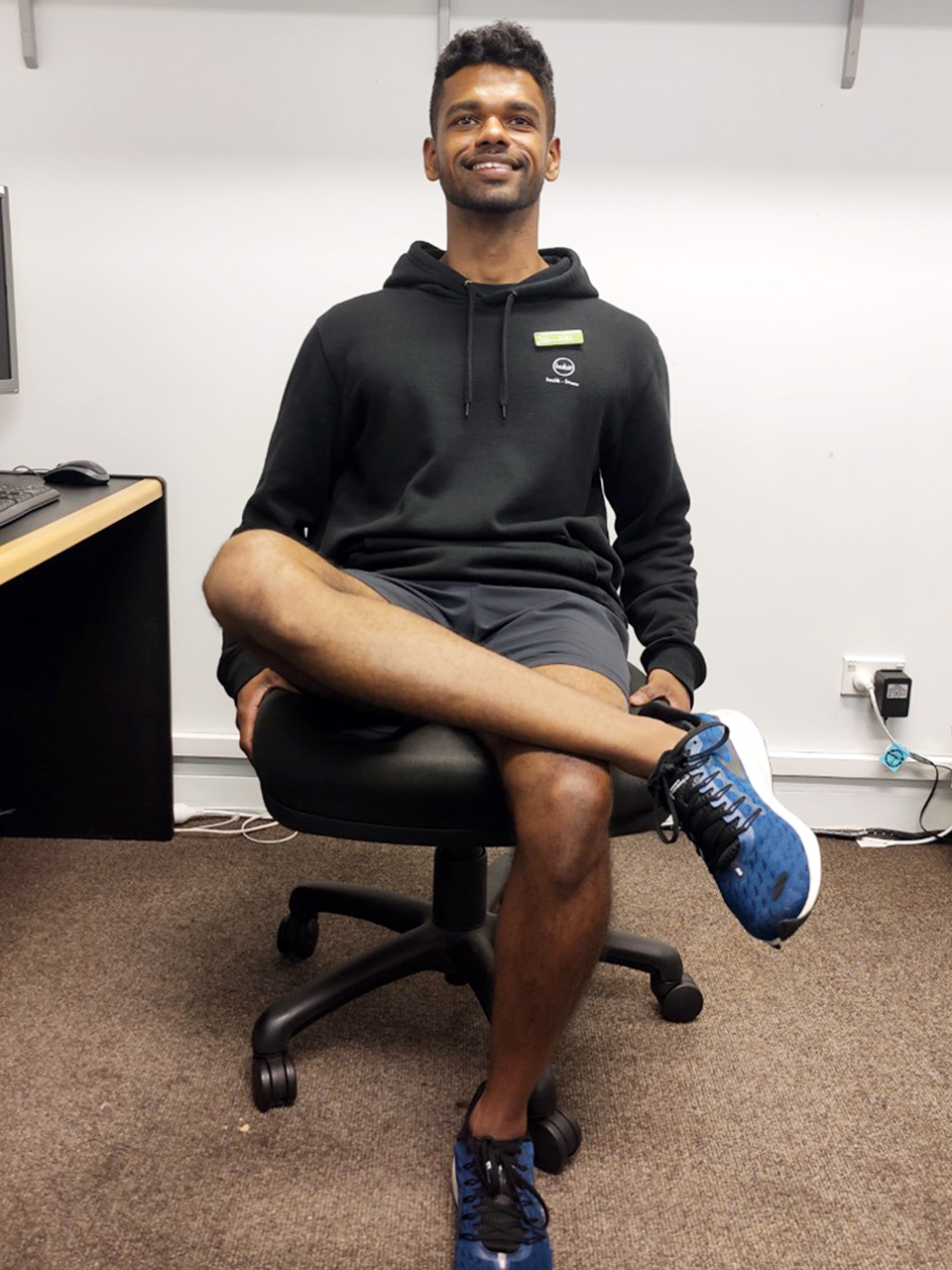 |
Back pain is one of the most common musculoskeletal conditions among office workers. Whether you’re sitting or standing, your back and leg muscles can become tight, causing increased strain in your joints. Stretching exercises can improve your back pain and increase your flexibility. The figure four stretch is one of the best stretches you can do for your body, regardless of the type of training you do. It targets the hips, lower back and glutes - your body’s largest and most powerful muscle group.
How To: Seated in a chair, cross one leg on top of the other so that your ankle is sitting over the opposite knee. Place one hand on the knee of the crossed leg. Gently lean your trunk forward while pressing gently on the crossed knee until you feel a mild to moderate stretch in the hip and buttock area. Hold the stretch for 15-20 seconds, then repeat 3-5 times on each side.
If you’re experiencing discomfort or pain, talk to a Habit Health expert today.
Book a Physiotherapist or Personal Trainer.
Performing these stretches will play a massive role in improving flexibility and reducing risks such as back pain and muscle soreness. Sometimes even changing positions, taking breaks and walking are still effective methods to relieve strain. The most important benefit of doing these exercises is that it will help to improve your general mood so that you can live your best life.
 | Allen Francis is a Personal Trainer at Habit Health in Auckland |